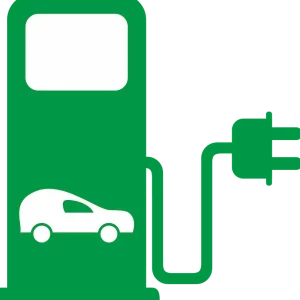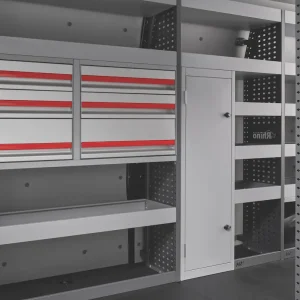The momentum towards electric vans is gathering pace.
With the sale of new petrol and diesel LCVs under 3.5t being banned from 2040, alongside fossil fuel cars, the countdown for businesses to establish green fleet strategies is under way.
The UK government has announced its intentions to enshrine in law a commitment to reduce emissions by 78% by 2035, and we can expect to see further initiatives rolled out in the months ahead.
Clean air zones have already been introduced in London and Bath, and are now due to be mirrored in many more cities including Bradford, Oxford, Bristol and Birmingham.
With the race to zero emissions intensifying, the eLCV business case for fleet managers warrants close scrutiny. As things stand, however, there is no one-size-fits-all strategy – its strength will depend upon a range of factors.
Benefits such as environmental and reputation gain, a favourable TCO, tax incentives, grant subsidies and charging exemptions in the green corner must be balanced against a higher upfront price tag, vehicle choice limitations, charging restrictions, and potential payload and towing challenges.
Vehicle range limitations also sit at the very heart of the decision-making process, but telematics data can play an important role in helping to solve this conundrum.
The electric promise
Encouragingly, research conducted by vehicle tracking and fleet management service Webfleet Solutions found that range may only serve as an obstacle for just over one-third (35%) of UK van fleets.
Indeed, an analysis of anonymised and aggregated driving data from around 100,000 connected vehicles revealed that the UK had the greatest electrification potential in Europe
for both LCVs and business cars.
84% of cars and 65% of LCVs currently being used commercially in the UK could be replaced by electric models.
By using the Fleet Electrification Planning Report, a new feature of Webfleet’s fleet management solution, recommendations can be made on which ICE vehicles could be replaced with electric alternatives, based on daily driven distances.
Webfleet concluded that if a vehicle drove less than 300km per day over a 12-month period, it could be replaced with an EV. The 300km maximum daily driving distance was chosen to reflect the average range of the most commonly available electric car and LCV models.
Telematics data can also help shape eLCV strategies and influence business case considerations in other areas. For fleets that have already begun the process of electric van adoption, for example, data reporting can help accurately compare EV running costs with their ICE equivalents.
The data route to eLCV management
When we turn our attention to the day-to-day operation of eLCV fleets, telematics can be used to help reduce range anxiety by constantly monitoring battery level and remaining driving range.
Geofence alerts can be set up to identify vehicles entering ultra-low emission zones, helping highlight where an EV could otherwise be used more cost-effectively.
Although eLCVs tend to suffer from fewer maintenance issues, vehicles will often be out of commission for longer periods of time if problems do occur. This is because faults that relate to electrical components call for the discharging and recharging of batteries to enable repairs to be carried out. Consequently, effective service, maintenance and repair management remains paramount to help minimise costly downtime.
On-board diagnostics, malfunction alerts, battery status and other EV health data, generated by telematics systems and relayed to managers from their electric fleets in real time, will become increasingly important elements of this, ensuring preventative maintenance work is carried out in a timely manner.
Webfleet’s vehicle maintenance planning tools also enable fleet operators to make use of real measured mileage, taken directly from their vehicle odometers, to plan maintenance intervals.
At-a-glance reports can enable fleet operators to keep tabs on everything from service intervals to MOTs.
Users can create maintenance tasks for each vehicle, copy them to vehicle groups, monitor their status and plan ahead more efficiently.
Furthermore, the impact of harsh driving styles – including aggressive cornering, braking or speeding – on fleet maintenance costs can be just as damaging for eLCVs as for ICE vehicles. Webfleet’s OptiDrive 360 functionality scores and profiles drivers based on performance indicators that relate to efficient, smooth and safe driving.
Armed with such critical data insights, forward-thinking businesses can make the right decisions at the right time, embracing electric vans to not only raise the bar in sustainability, but also maximise cost savings and ensure an efficient, financially robust e-mobility future.





